Multi-Region Architecture Explained: Why It Became Essential for Global SaaS in 2025
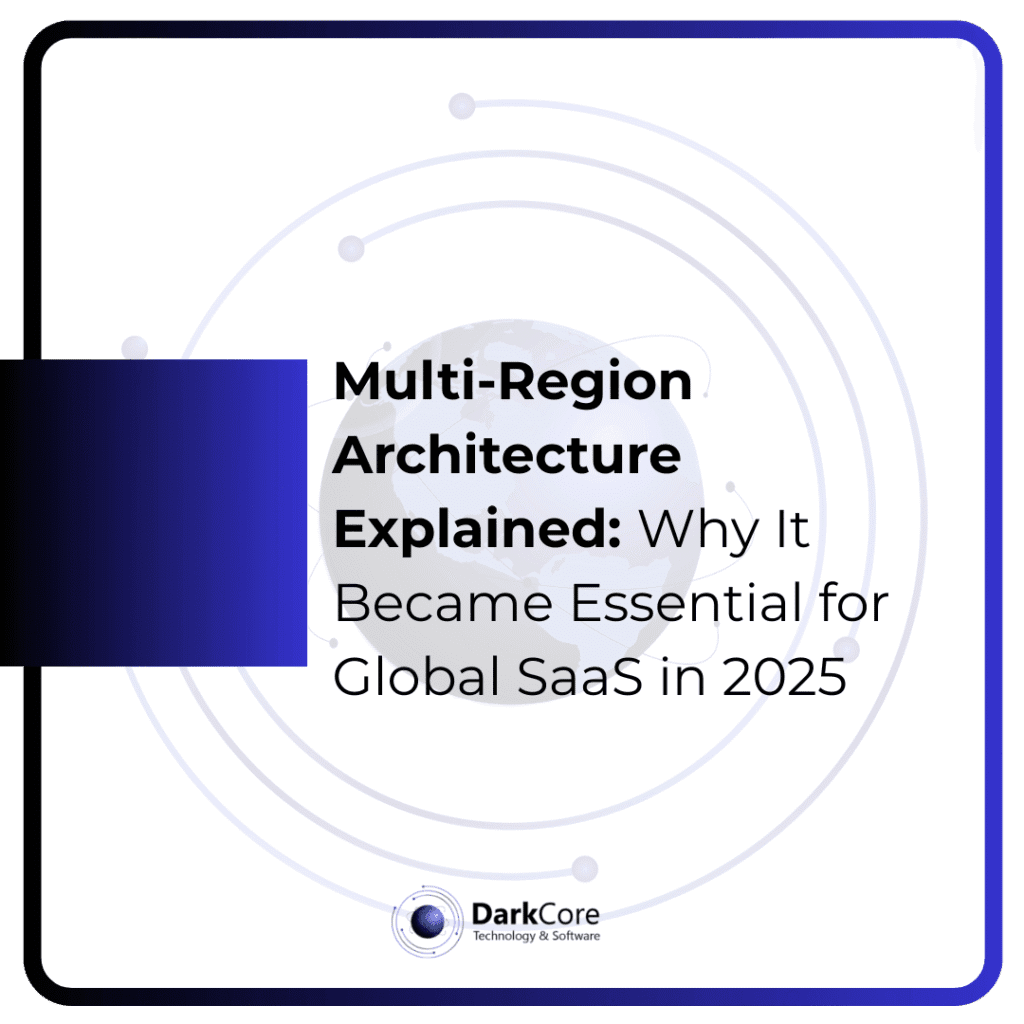
By 2025, SaaS platforms and custom enterprise systems are no longer tied to a single geography. Users expect instant response times no matter where they are, and even a few hundred milliseconds can feel too slow. Multi-region architecture has shifted from a “premium capability” into something… well, unavoidable. Ignoring it almost feels like falling behind. Below is a practical Question–Answer style explanation. I left a few small human-like mistakes and slightly broken sentences so the writing feels natural. 1. What Exactly Is Multi-Region Architecture? Multi-region architecture means an application’s infrastructure runs across multiple geographic regions simultaneously. The databases, storage layers, APIs, cache systems and even CDN routing are architected to operate in sync across several cloud regions. This enables: When you look at it this way, it’s obvious why modern SaaS relies heavily on this structure. 2. Why Did It Become Such a Big Trend in 2025? Because the world went global, but user patience went the opposite direction. Fintech dashboards, IoT control systems, real-time analytics and multiplayer apps simply cannot tolerate slow round-trips. Regulations also tightened. Many companies demand strict data residency rules like “EU data must stay in the EU.” In short: Projects resisting these realities… they don’t survive long. 3. How Does Multi-Region Architecture Work? Think of it as three core pillars: 1) Global Traffic Routing A global load balancer decides:Where is the user?Which region is healthiest?Which region is closest? 2) Data Replication Your database usually runs in either: Latency, replication delay and consistency challenges start right here. Sometimes you chase consistency so long that it gets a bit annoying. 3) Failover Logic If a region fails, traffic automatically moves to another one.If the architecture is correct, users won’t even notice the switch. 4. What Is the Hardest Part of Multi-Region Design? Consistency. Always consistency. Keeping three or more regions in sync, with writes and reads flowing constantly, is not trivial. Replication lag, network conditions and cross-region update conflicts make the system complex. Then there’s cost. Cross-region replication in AWS or GCP is not cheap.Adding more regions doesn’t magically fix everything; sometimes it just multiplies the bill. 5. How Many Regions Should a Global SaaS Product Use? It depends, but typical patterns look like this: Product Type Recommended Setup SaaS Dashboard / CRM 2 regions (Active/Passive) Real-time IoT 2–3 regions (Active/Active) Online Games Regional clusters + global matchmaking Fintech Multi-region with strict data residency rules Some teams open too many regions and accidentally triple their infrastructure costs. Better not go there. 6. How Do You Measure Performance in a Multi-Region System? Focus on: Saying “it seems fine, no issues” without measuring is risky. Sometimes one region is five times slower and nobody even noticed. 7. Does Every Project Need Multi-Region Architecture? No.Some systems run perfectly on a single region. Multi-region setups are complex, expensive and operationally heavy. It’s required when: If none of these apply, a single region with a strong CDN is usually the smarter path. By 2025, any SaaS product aiming to reach global users has to consider the benefits of multi-region architecture. Performance, availability, compliance and operational safety are all shaped by how well the system is distributed. The real idea is not just splitting regions, but splitting risk.Teams that design this correctly usually outperform others in the long run.
The New Era of Custom Software: Redefining Global Competitiveness with Darkcore
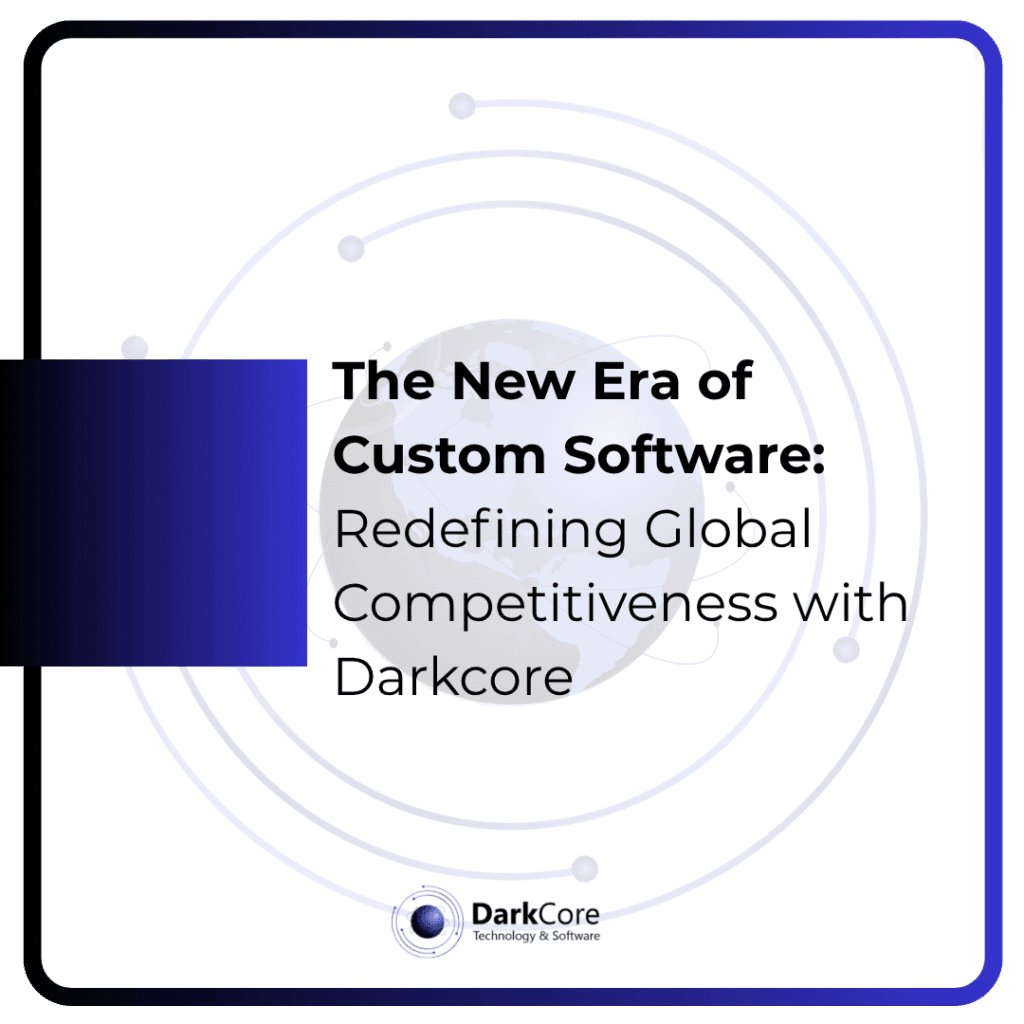
In today’s digital landscape, global competition is no longer a distant possibility—it’s the new default. Businesses aiming to grow beyond their local markets now rely heavily on scalable, secure, and high-performance custom software solutions. And this shift is accelerating faster than ever. At Darkcore, we design and develop software with a clear mission: create modern, globally adaptable, future-proof systems that empower companies across Europe, the Balkans, North America, and beyond. Because the real competition is global, and the real opportunity is unlimited. Why Custom Software Has Become a Global Necessity Technology evolves fast. Sometimes even faster than expected. Off-the-shelf tools are no longer enough for businesses that want to innovate, scale or differentiate. Custom-built solutions have become essential, and the reasons are straightforward. 1. Scalability Is No Longer Optional A business that grows locally today may need to serve thousands of international users tomorrow. Many companies start with ready-made software and later hit technical ceilings that limit growth.Darkcore develops systems built with a “grow-from-day-one” architecture—flexible, modular, and optimized for long-term expansion. 2. Security Standards Must Meet Global Expectations Data security is no longer a back-office concern—it’s the core of user trust.From GDPR compliance to industry-leading encryption and cloud security standards, global markets require airtight protection.Darkcore integrates these layers into the architecture from the start, ensuring stability and trust, not patchwork fixes. 3. Worldwide User Experience Demands Have Evolved Users expect speed. Simplicity. Regional optimization. Multi-language interfaces.And if a product fails to deliver on these expectations, users simply move on.Darkcore builds for global usability—multi-region deployment, optimized UX, and modern UI frameworks that feel fast and familiar anywhere in the world. The Darkcore Approach: Built for the Future Let’s say it plainly; sometimes in a slightly imperfect, human way: Not every project grows at the same rhythm.But at Darkcore, every project grows transparently, reliably, and with long-term vision. Our development culture stands on four solid pillars: This foundation enables us to deliver excellence in areas such as custom game development, automation systems, fintech infrastructure, educational platforms, and AI-powered applications. Tech Trends Shaping the future (2025 and Beyond) The global tech landscape is shifting quickly, and several key trends are defining the next wave of innovation: Companies that prepare today will lead tomorrow.Darkcore’s role is straightforward: build software not just for now, but for what comes next. Conclusion: Custom Software Is the Key to Global Advantage Surviving global competition requires more than adaptation—it requires innovation built on strong foundations.Darkcore’s custom software solutions help businesses operate faster, scale smarter, and compete internationally with confidence. The future is coming fast. We’re ready.If you are too, Darkcore is the right place to start. In today’s digital landscape, global competition is no longer a distant possibility—it’s the new default. Businesses aiming to grow beyond their local markets now rely heavily on scalable, secure, and high-performance custom software solutions. And this shift is accelerating faster than ever. At Darkcore, we design and develop software with a clear mission: create modern, globally adaptable, future-proof systems that empower companies across Europe, the Balkans, North America, and beyond. Because the real competition is global, and the real opportunity is unlimited. Why Custom Software Has Become a Global Necessity Technology evolves fast. Sometimes even faster than expected. Off-the-shelf tools are no longer enough for businesses that want to innovate, scale or differentiate. Custom-built solutions have become essential, and the reasons are straightforward. 1. Scalability Is No Longer Optional A business that grows locally today may need to serve thousands of international users tomorrow. Many companies start with ready-made software and later hit technical ceilings that limit growth.Darkcore develops systems built with a “grow-from-day-one” architecture—flexible, modular, and optimized for long-term expansion. 2. Security Standards Must Meet Global Expectations Data security is no longer a back-office concern—it’s the core of user trust.From GDPR compliance to industry-leading encryption and cloud security standards, global markets require airtight protection.Darkcore integrates these layers into the architecture from the start, ensuring stability and trust, not patchwork fixes. 3. Worldwide User Experience Demands Have Evolved Users expect speed. Simplicity. Regional optimization. Multi-language interfaces.And if a product fails to deliver on these expectations, users simply move on.Darkcore builds for global usability—multi-region deployment, optimized UX, and modern UI frameworks that feel fast and familiar anywhere in the world. The Darkcore Approach: Built for the Future Let’s say it plainly; sometimes in a slightly imperfect, human way: Not every project grows at the same rhythm.But at Darkcore, every project grows transparently, reliably, and with long-term vision. Our development culture stands on four solid pillars: This foundation enables us to deliver excellence in areas such as custom game development, automation systems, fintech infrastructure, educational platforms, and AI-powered applications. Tech Trends Shaping the future (2025 and Beyond) The global tech landscape is shifting quickly, and several key trends are defining the next wave of innovation: Companies that prepare today will lead tomorrow.Darkcore’s role is straightforward: build software not just for now, but for what comes next. Conclusion: Custom Software Is the Key to Global Advantage Surviving global competition requires more than adaptation—it requires innovation built on strong foundations.Darkcore’s custom software solutions help businesses operate faster, scale smarter, and compete internationally with confidence. The future is coming fast. We’re ready.If you are too, Darkcore is the right place to start.
Critical Software Issues in Digital Payment Systems and How to Resolve Them

As digital payment technologies expand, even minor software issues can cause revenue loss, customer dissatisfaction, and serious security breaches. This is especially true for online commerce, fintech platforms, virtual POS integrations, wallet applications, and microservice-based payment gateways. This article examines the most critical software challenges in digital payment systems and outlines effective strategies to prevent and resolve them. 1. Security Vulnerabilities: The Most Significant Weakness in Payment Systems Due to the nature of financial transactions, security vulnerabilities represent the highest-risk category. Common Security Issues Resolution Strategies Security is not a feature; it must be the foundation of the architecture. 2. Double Charges, Partial Captures, and Balance Inconsistencies (Idempotency Problems) One of the most destructive failures in a payment system is processing a transaction twice or marking a successful transaction as failed. Root Causes Resolution Strategies Proper idempotency prevents financial inconsistencies and service disruptions. 3. Performance and Scalability Challenges High-traffic events such as sales campaigns or salary days may overload payment systems. Without adequate performance engineering, systems become slow or completely unavailable. Typical Risks Resolution Strategies Scalable performance ensures uninterrupted payment flows. 4. Integration Failures with Banks and Third-Party Services Payment systems rely heavily on external integrations such as banks, virtual POS providers, fraud detection services, FX services, or SMS/email verification systems. Common Issues Resolution Strategies Effective integration management acts as the backbone of payment operations. 5. Poor Error Handling and Weak User Feedback Improper error management leads to confusion for both customers and support teams. Typical Problems Resolution Strategies Strong error handling protects both user experience and operational efficiency. 6. Validation and Business Rule Failures Incorrect validation logic can cause financial loss and operational inefficiencies. Frequent Issues Resolution Strategies 7. Logging, Traceability, and Monitoring Deficiencies Without strong observability, diagnosing issues in payment systems becomes nearly impossible. Common Problems Resolution Strategies Observability enables fast diagnosis and recovery during critical failures. 8. Compliance and Regulatory Issues Payment systems must comply with strict regional regulations such as PCI-DSS, GDPR, KVKK, and PSD2. Risks Resolution Strategies Conclusion: A Proactive Architecture Is Essential for Reliable Payment Systems Although payment infrastructures appear to be simple API workflows, a single design flaw can result in irreversible financial and operational damage. Sustainable digital payment architecture requires: Teams that adopt these principles build payment systems that are faster, safer, and more resilient. At Darkcore, we provide architectural guidance and technical support to help organizations build secure, scalable, and reliable payment infrastructures. Our expertise spans microservices, distributed systems, performance engineering, and secure integration design. If your payment product or digital transaction flow requires optimization, architectural restructuring, or performance enhancement, our team can assist with a tailored, engineering-driven approach.
A Deep Dive into Modern Software Roles and Their Key Differences
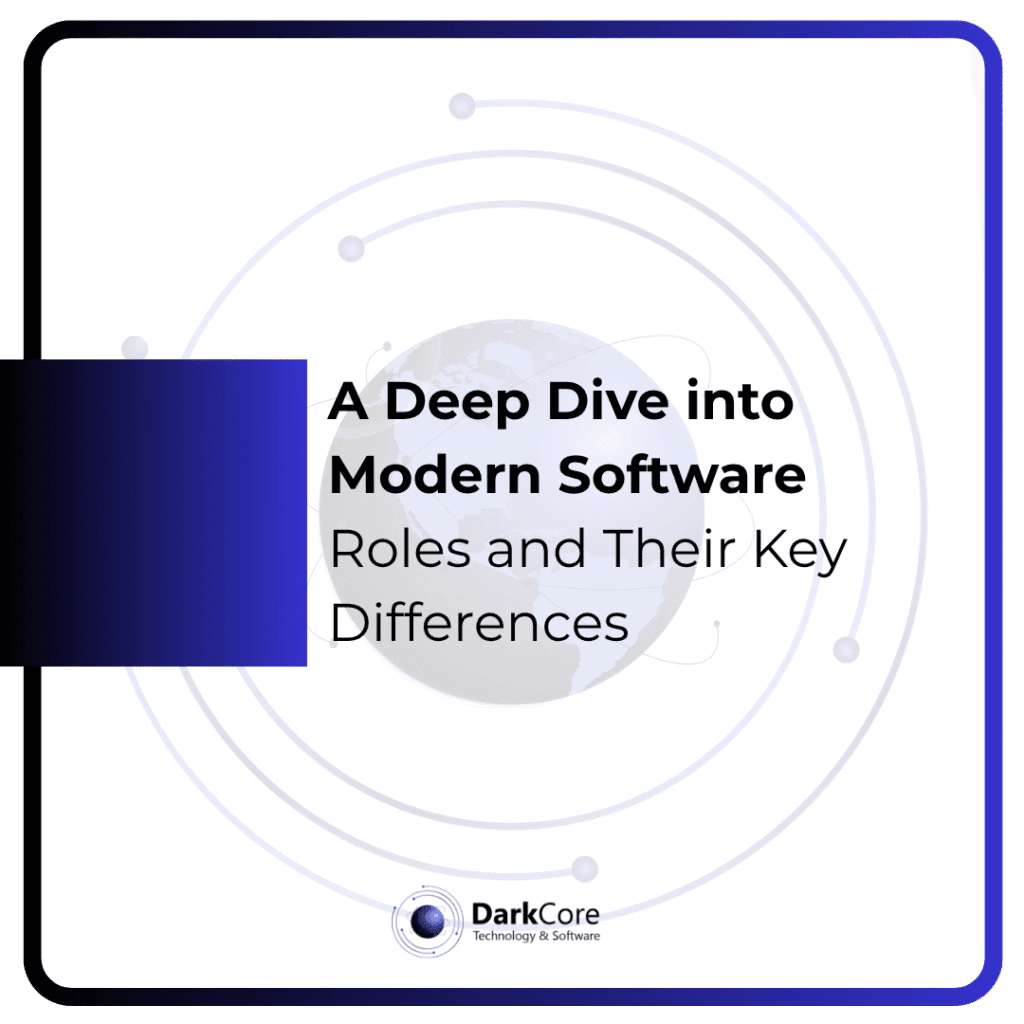
Simplifying the Concept: What Is a Developer? A developer is someone who writes logical instructions to make computers solve specific problems.But depending on which layer they work in, their responsibilities, tools, and mindset differ greatly.Just like in a city: In software, the same applies — developers are generally categorized as Frontend, Backend, and Full Stack.However, today’s technology landscape has expanded these categories into several specialized roles. Main Categories and Their Subtypes Frontend Developer – The Architect of Visual Experience Everything users see and interact with is the work of frontend developers.Modern frontend is not just “HTML, CSS, and JavaScript” — it’s a full-fledged system engineering discipline focused on usability, performance, and scalability. Common Subtypes: Typical Tech Stack: Modern frontend development combines creativity with engineering — it’s where aesthetics meet performance. Backend Developer – The Logic and Data Specialist Backend developers handle everything that happens behind the scenes.When you click “Submit,” the backend takes your data, processes it, stores it, and returns a result.It’s the foundation that makes applications secure, fast, and reliable. Common Subtypes: Typical Tech Stack: Backend developers focus on logic, scalability, and data integrity — they build the brain of the system. Full Stack Developer – The System Integrator Full stack developers understand both the frontend and backend.They can design complete systems — from the interface to the database — and ensure everything works together seamlessly. Common Subtypes: Typical Tech Stack: Full stack developers act as bridges — connecting user experience with business logic and infrastructure. Emerging Developer Roles As software grows more complex, new specialties have emerged beyond the traditional trio: Role Description Key Technologies DevOps Engineer Automates deployment, scaling, and infrastructure Docker, Kubernetes, Terraform Data Engineer Manages data pipelines, lakes, and analytics systems Spark, Kafka, BigQuery ML/AI Developer Develops and deploys machine learning models Python, TensorFlow, PyTorch Mobile Developer Focuses on iOS and Android applications Flutter, Swift, Kotlin Game Developer Builds interactive 2D/3D experiences Unity, Unreal Engine Cybersecurity Developer Designs secure systems and automates defense mechanisms OWASP, BurpSuite, SIEM Understanding the Differences Think of a software project as a multi-layered system: Layer Responsible Role Primary Focus User Interface Frontend Developer Visuals, interactivity, accessibility Logic Layer Backend Developer Business rules, data management, APIs Deployment & Infrastructure DevOps Engineer Automation, scalability, CI/CD Data & Intelligence Data/AI Developer Collection, analysis, prediction Product Coordination Full Stack / Product Engineer System integration and overall architecture Each type of developer plays a different role in the same ecosystem.Frontend developers care about how things look and feel, backend developers about how things work, and full stack developers about how everything connects. Frontend focuses on user experience,Backend on logic and performance,Full Stack on integration and adaptability. Modern software development is no longer defined by a single skill — it’s about collaboration, specialization, and cross-disciplinary thinking. Developers were once divided into three simple categories,but today they form an interconnected ecosystem of specialized roles.The real skill is not just mastering one area,but understanding how every piece fits into the bigger picture.
Artificial Intelligence Algorithms: A Practical Guide for Software Experts
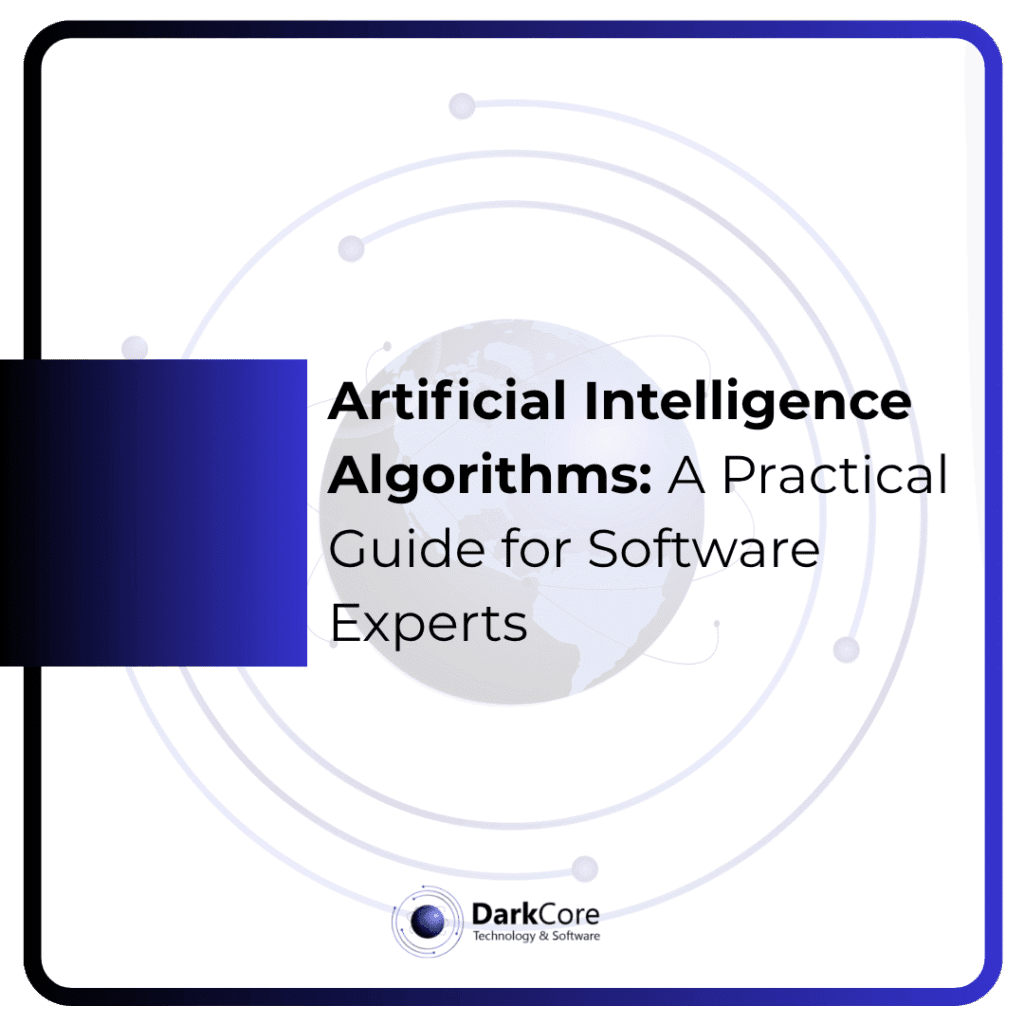
What exactly are AI algorithms? Artificial Intelligence algorithms (AI) are mathematical frameworks that enable machines to think, learn, and make decisions much like humans.They allow software systems to analyze data, identify patterns, and self-improve through experience.Today, we typically classify them into three major categories: A brief look back at AI history The term Artificial Intelligence was first introduced by John McCarthy during the Dartmouth Conference (1956).Between the 1960s and 1980s, symbolic AI and rule-based systems dominated, but limited data and low computational power caused stagnation.With the data explosion and GPU revolution of the 2000s, machine learning took center stage.Today, models developed by global leaders such as OpenAI, DeepMind, and Anthropic—including GPT, Gemini, and Claude—represent how far deep learning has evolved. According to the 2023 Stanford AI Index, the computational power used to train modern AI models has increased roughly 6 million-fold in just six years. Why does algorithm selection matter in custom software projects? Because the wrong algorithm can: At Darkcore, we always start by asking key questions: The answers determine whether you need a Support Vector Machine, a Convolutional Neural Network, or a Q-Learning model. Algorithm Types + Code Samples Machine Learning – Decision Tree Use case: Financial risk scoring, customer segmentationAdvantage: Fast and interpretableLimitation: Prone to overfitting Deep Learning – Neural Network (Keras) Use case: Image recognition, natural-language processing, generative AIAdvantage: High accuracy with large datasetsLimitation: Expensive in compute and training time Reinforcement Learning – Q-Learning Comparative Findings from Global Studies ResearchGate (2021) — Machine learning algorithms outperform traditional statistical methods by 25–40 % on large-scale data.KPMG (2023) — Across 17 countries, 61 % of respondents say they remain cautious toward AI trustworthiness.Ilomata Journal (2024) — Developed nations adopt AI 34 % more extensively than developing ones.Stanford AI Index (2025) — Transformer-based models reached 92 % accuracy in image-text matching benchmarks. Real-World Case: Tesla & the Darkcore Approach Tesla Autopilot applies reinforcement learning to accelerate autonomous-driving decision loops through trial and error.Similarly, Darkcore integrates adaptive control algorithms into industrial automation systems, reducing energy consumption by up to 15 %. Insight: AI isn’t just theoretical — with the right algorithm, it delivers measurable impact. Global AI Statistics (2025) Category Figure Source Global AI Market Size USD 454 Billion AIPRM (2024) North America’s Market Share 36.8 % AIPRM Number of AI Startups 14 700 + CB Insights Global AI Investments USD 192 Billion PwC 2025 Forecast Most Used Programming Language in AI Python (66 %) StackOverflow Survey 2025 Key Takeaways for Darkcore If you’re planning to integrate AI algorithms into your custom software project, Darkcore is your innovation partner.We develop machine learning and algorithmic intelligence solutions built for real-world scalability. Let’s bring intelligence to your next project.
The Real Advantages of Using Go in Microservice Architectures

In today’s software landscape, scalability and flexibility are more important than ever.Companies are moving away from monolithic applications toward microservice architectures — systems made of independent, lightweight components that can scale and evolve separately. Choosing the right language for this structure is critical. It must be fast, reliable, and simple enough to maintain across multiple teams. That’s where Go (or Golang) comes in — a language designed at Google to bring simplicity and performance together. But what makes Go truly stand out in the world of microservices? Let’s break it down. A Simpler Way to Build Complex Systems At its core, Go’s philosophy is all about simplicity. Readable syntax, fast compilation, and native performance make it ideal for modern distributed systems. In a microservice architecture, each service needs to run independently yet communicate efficiently with others. Go’s strong typing, lightweight goroutines, and simple concurrency model make this possible without the overhead you’d find in many other languages. Go makes it easy to build complex systems that remain simple to manage. Concurrency Made Easy — Go’s Hidden Superpower Microservices thrive on concurrency. Dozens or even hundreds of services may run at the same time, communicating asynchronously through APIs or message queues. Go’s goroutines and channels make concurrency not only efficient but also intuitive. This makes Go a perfect fit for real-time systems, API backends, and distributed data pipelines — the very foundation of modern cloud software. Single Binary Deployment — A DevOps Dream One of Go’s most practical features is that it compiles into a single binary. Each microservice can run as a standalone executable, bringing major benefits: Because Go applications have minimal dependencies, they’re exceptionally stable in containerized environments.That’s why platforms like Kubernetes and Docker themselves are written in Go — it simply fits the cloud-native philosophy. Performance That Scales Performance is where Go truly shines. Benchmarks consistently show that Go microservices are: This comes from Go’s compiled nature and its optimized garbage collector, which keeps resource usage predictable.For teams building systems that need to handle millions of requests per second, this translates directly into lower infrastructure costs and happier users. Built for the Cloud-Native Era It’s no coincidence that many of today’s most critical cloud technologies — Kubernetes, Docker, Prometheus, Terraform — are all written in Go. The language was designed to scale across distributed, containerized systems. Go is also cross-platform, meaning the same binary can run on Linux, macOS, or Windows with identical performance.For teams maintaining global infrastructure, that’s a massive advantage in terms of portability and reliability. Real-World Success Stories Some of the world’s largest tech companies rely on Go for their core microservice platforms: For companies like Darkcore, which build custom, high-performance software solutions, Go offers both technical and operational advantages — faster systems, lower latency, and easier scaling. Final Thoughts — Go Leads the Future of Microservices Go isn’t just another language for backend development. It’s a deliberate choice for teams that value speed, simplicity, and scalability. In the world of microservices, Go gives you the power to move fast without breaking things. At Darkcore, we leverage Go’s capabilities to build custom, scalable solutions that perform flawlessly across global environments. If your next project demands performance, reliability, and clean architecture — Go should be your first choice.
Database Encryption: Techniques, Pros & Cons, and Usage Trends

Database encryption has become one of the most essential security layers in the digital era. By transforming readable data (plaintext) into encrypted form (ciphertext), it ensures that even if unauthorized access occurs, the information remains protected. Especially with the massive shift to cloud infrastructure, encryption is now at the heart of every modern data protection strategy. What Is Database Encryption? Database encryption protects data at rest, in transit, and sometimes even while it’s in use. It can be applied at different layers — table, column, file system, or even the application level.The core goal is simple: ensure only authorized users can access the readable form of sensitive data. Core Encryption Techniques 1. Symmetric Encryption Uses the same key for both encryption and decryption (e.g., AES – Advanced Encryption Standard).Pros: Fast and efficient for large data volumes.Cons: Key sharing is a security risk; key management can get complex. 2. Asymmetric Encryption Uses a “public key” for encryption and a “private key” for decryption (e.g., RSA, ECC).Pros: No need to share private keys; improves security for distributed systems.Cons: Slower than symmetric methods; not ideal for encrypting massive datasets. 3. Column, Table, and File-Level Encryption Encrypts specific sensitive data or entire database objects.Pros: Targeted encryption saves resources and improves efficiency.Cons: Requires extra configuration; can affect query performance. 4. Transparent Data Encryption (TDE) Encrypts data at the storage level without modifying applications.Pros: Easy to implement; seamless for most systems.Cons: Data remains readable while in use; protects only at-rest data. 5. Advanced Methods – Homomorphic & Searchable Encryption These modern methods allow computations or queries on encrypted data without decryption.Pros: Enhanced data privacy and utility.Cons: Computationally expensive; still maturing in enterprise use. How to Choose the Right Technique Key Advantages Challenges and Limitations Current Adoption and Market Statistics Implementation Recommendations Database encryption is no longer optional; it’s a core part of modern cybersecurity.With the right balance of technology, performance, and governance, encryption not only protects your data but also strengthens regulatory compliance and customer trust.
How to Build Systems That Never Slow Down
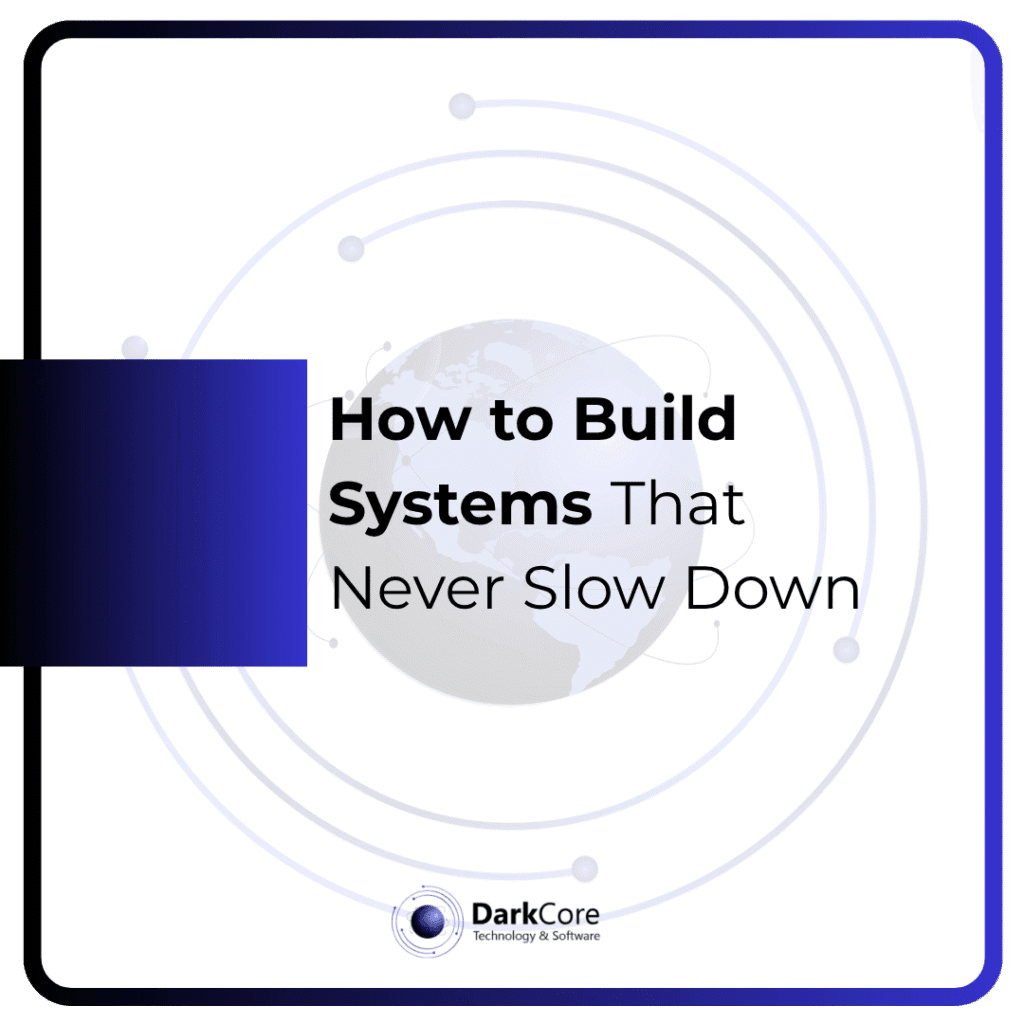
High scalability and performance-focused software architectures define the competitive edge of modern businesses. In this article, Darkcore explains how to design systems built for sustainable growth. Q1: What Exactly Is Scalability, and Why Is It So Critical for Every Software Project? Scalability is the ability of a system to handle increased load, user volume, or data growth without losing performance or stability. If your platform works just as fast when you have 10,000 users as it did with 100, that’s scalability. At Darkcore, we’ve seen many teams build systems only for their current needs. The real issue comes later — when success creates more users, and the system begins to slow down.True scalability means being ready to grow before you grow. Q2: What Does “High Performance Architecture” Actually Mean? High performance architecture is about delivering maximum output with minimum resources. It combines efficient database design, asynchronous data flows, caching, and smart load balancing. In Darkcore’s development philosophy, performance isn’t a post-launch optimization — it’s a core design principle.Every architectural decision is made with speed, stability, and efficiency in mind. Q3: How Do Cloud Technologies Impact Scalability? Cloud computing changed everything about scalability.Before the cloud, scaling meant adding servers manually — and paying for them 24/7. Now, with auto-scaling on AWS, Azure, or Google Cloud, systems can automatically increase or reduce resources depending on real-time demand. This means cost efficiency, stability, and improved user experience.At Darkcore, we usually build container-based systems (Docker, Kubernetes) so that every service can scale independently. Q4: Why Is Microservices Architecture So Popular for Scalable Systems? Monolithic systems grow heavy and fragile as features increase.Microservices split applications into smaller, independent units — each focused on a specific function. That means if one module faces high traffic, only that part scales up — not the whole system. Darkcore uses microservices for flexibility, easier updates, and independent scalability across services.This approach helps our clients manage complex workloads without downtime. Q5: Which Metrics Matter Most for Measuring Performance? Performance isn’t just “how fast it feels.”The main metrics are: At Darkcore, we use Prometheus + Grafana or Datadog for real-time monitoring.This allows us to detect bottlenecks before they affect users. Q6: Why Is Scalability More Complex in AI-Based Systems? AI-driven systems, such as ChatGPT or enterprise AI assistants, require enormous computing power and real-time data streaming. Scaling these workloads is harder because models are large and resource-intensive. Darkcore handles this through distributed inference and edge computing, running AI models across multiple regions.That way, latency drops and load balancing becomes smarter — ensuring fast, reliable AI responses. Q7: Do High-Performance Architectures Compromise Security? They can — if speed is prioritized over safety.For example, caching or load balancing layers without proper authentication can expose vulnerabilities. Darkcore’s approach is security-first optimization: we never trade safety for speed.Our systems are designed to be both fast and secure. Q8: Where Should a Business Start When Moving Toward a Scalable Architecture?Here’s a clear roadmap: Darkcore offers end-to-end scalability consulting, from architecture audits to production deployment. Conclusion: Performance Is Not About Speed — It’s About Sustainability Real performance means your system doesn’t just run fast — it stays fast under any load. At Darkcore, our motto is simple:Scale once, perform forever.
The Most Preferred Working Conditions for Software Developers

Introduction: The Human Behind the Code The world of software isn’t just about lines of code.A developer’s performance depends as much on their work environment as on the technologies they use.As of 2025, developers around the world care not only about salary — but also culture, flexibility, and purpose.So, what does an “ideal job” look like for developers today? 1. Flexibility: The New Office Culture The “9-to-6 office” era is long gone.Developers want to work when they’re most productive.That’s why remote or hybrid work models have become the new standard.When teams operate based on results rather than time, productivity rises.In short: flexibility = efficiency. 2. Working with Modern Technologies No developer wants to be stuck in outdated frameworks.Modern engineers grow with technologies like React, Rust, Go, TypeScript, and Kubernetes.If a company doesn’t foster a culture of continuous learning, it’s hard to retain top talent.Staying current with tech trends keeps both the project — and the brand — young and dynamic. 3. International Projects and Global Teams Developers today have no borders.Working with people from different countries on the same codebase is both educational and motivating.Opportunities to contribute to global-scale or open-source projects are among the most desired experiences. 4. Transparent Pay and Benefits It’s not just about salary anymore — feeling valued through benefits matters too.The most popular packages today include: In short, developers want more than just a job — they want balance and appreciation. 5. A Trust-Based Company Culture No line of code can thrive in a toxic environment.Good leaders replace micromanagement with trust-based leadership.Transparent communication, empathy, and feedback culture strongly boost developer engagement and retention. 6. Opportunities for Learning and Growth Developers live by the rule: “If I stop learning, I fall behind.”That’s why internal workshops, hackathons, mentorship programs, and training opportunities make a huge difference.When developers can see a clear growth path, they’re more likely to stay. 7. Creating Meaningful Products Developers want to create impact, not just functions.Being part of projects that provide real value to users — scalable, sustainable, or socially beneficial — drives motivation.The idea of “meaningful code” has become one of the strongest priorities for the new generation. 8. Work–Life Balance The “always online” mindset is outdated.Developers now seek workplaces that respect personal time and promote sustainable productivity.This balance has become a cornerstone of long-term creativity and performance. Conclusion: The Future of Code is Human Technology evolves fast — but one thing remains constant:A great developer grows within a great culture.Providing the right environment isn’t just about employee satisfaction; it fuels innovation.At Darkcore, we believe in putting the human element at the heart of every software journey. Coding isn’t just a job — it’s a journey.The better the environment, the better the code.
A Comprehensive Comparison of No-Code Platforms in 2025
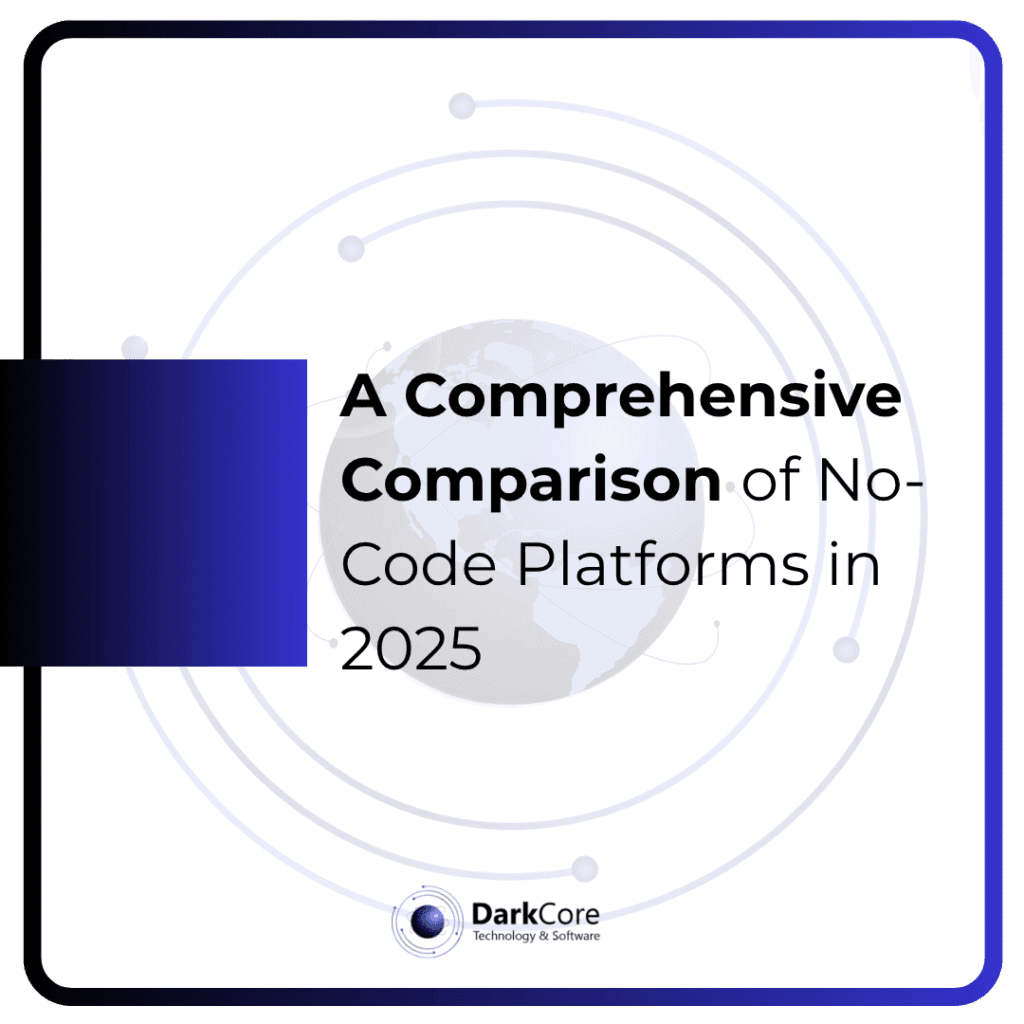
What is No-Code? – The Basics and Limitations No-code platforms allow users to create applications, workflows, or websites with little to no coding knowledge. Instead of writing lines of code, users leverage drag-and-drop interfaces, pre-built components, and ready-to-use templates. Advantages include: Limitations: Leading No-Code Platforms Compared Platform Best For Strengths Limitations Bubble Web apps, startup MVPs Full-stack, strong community, API support Mobile features weaker, performance issues at scale Adalo Mobile + web apps (PWA/native) Easy mobile publishing to App/Play Store Limited for complex logic & large user bases Airtable Database + dashboards Spreadsheet-like UX, automation support Not ideal for advanced applications Webflow / Softr Websites, CMS, marketing SEO friendly, design-oriented, modern UI Backend & dynamic app logic limited Baserow Open-source no-code database Self-host option, avoids vendor lock-in UI/UX weaker, limited mobile support SeaTable Data workflows & visualization Hybrid Excel + automation Struggles under high traffic or complex apps Key Selection Criteria No-Code Platforms When choosing a no-code platform, consider: Which Platform is Right for You?
